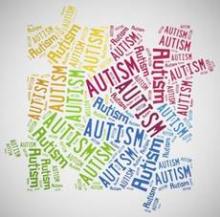WASHINGTON – Studies of the younger siblings of children with autism spectrum disorders are beginning to yield information that has important implications for screening, reducing the age at diagnosis, and identifying the window of time during which still unidentified interventions might be able to affect the course, according to experts who spoke at the annual convention of the American Psychological Association.
During a symposium on early development and predictors of outcomes in infant siblings of children with autism, several experts summarized the results of studies evaluating the emergence of autism spectrum disorders (ASD) and ASD-like symptoms in the younger siblings of children with ASD, as well as tools that are being studied in high-risk sibling studies as potential methods of diagnosing ASD earlier.
The risk of ASD is 1 in 68 in the general population, but is almost 1 in 5 among the siblings of children diagnosed with ASD. An additional one in five siblings will have "shadow symptoms" of autism, which refers to children with some of the symptomatology but not enough to merit a diagnosis. In addition, another 1 in 10 will have nonautism developmental delays.
Therefore, about 50% of infant siblings of children with ASD "are vulnerable in their development to some degree, so that’s why we’re studying them so closely," said one of the speakers, Celine Saulnier, Ph.D., clinical director for research at the Marcus Autism Center, Emory University, Atlanta.
During the symposium, Alice Carter, Ph.D., professor of clinical psychology at the University of Massachusetts, Boston, provided the results of a prospective study that identified high-risk siblings who exhibited some ASD-like behaviors early on but were not diagnosed with autism at age 3.
A growing body of literature focusing on milder ASD symptoms in relatives of people diagnosed with ASD indicates that about 20%-30% of children who are at high genetic risk develop some symptoms of autism but not enough symptoms or symptoms that are severe enough to make the diagnosis, she said. This is often referred to as the broader autism phenotype (BAP), which affects an estimated 19% of unaffected siblings at age 12 months.
The prospective study followed 26 infants who had older siblings with ASD, the high-risk group, to 33 infants whose older siblings had typical development. None of these infants met the diagnostic criteria for ASD at 18, 24, and 36 months. Parents completed a questionnaire, the Brief Infant-Toddler Social Emotional Assessment (BITSEA), when the child was 12, 18, and 24 months.
Based on the results of these parent reports, unaffected siblings of the children with autism "displayed more ASD-relevant problem behaviors than the unaffected infants with typically developing siblings," Dr. Carter said. The former also appear to show "a somewhat different trajectory of these behaviors over time," with scores that were significantly different at 18 months from the low-risk group but "converging" by the time they were aged 24 months, when they appeared to be comparable.
These results support the importance of monitoring younger siblings of children diagnosed with ASD for the emergence of ASD symptoms with routine developmental screening and surveillance, "as they may benefit from early intervention services," Dr. Carter said. But even without such services, children may follow the "self-righting trajectory that takes them back on a normative developmental course," which was evident in the study, she added. (She noted that the limitations of the study included the small sample size in the Boston area. In addition, the participants, were mostly white and had higher than average annual family incomes above $65,000.)
Dr. Carter said future challenges will be to distinguish between three different groups of infants who do not meet the full criteria for an ASD diagnosis: Those manifesting symptoms that mark the beginning of the pathway toward ASD or the emergence of ASD (prodromal ASD); those whose symptoms are likely to resolve; and those who show signs of ASD that "will endure and reflect the broader autism phenotype." The primary target for early screening and detection is the identification of the prodromal group, she added.
Other studies involving high-risk siblings include the UC Davis Infant Sibling Study, which is prospectively following infants with an older sibling who has autism and infants with an older sibling who is developing typically, following the infants up to age 3 years, through the window of autism risk. The second phase of the study followed a small group of infants, enrolled between 6 and 9 months, to age 3 years, with testing that included retrospective and prospective parent ratings, and prospective examiner ratings. Most (89%) of the children who developed ASD showed a regressive onset in terms of their social communication behaviors.


